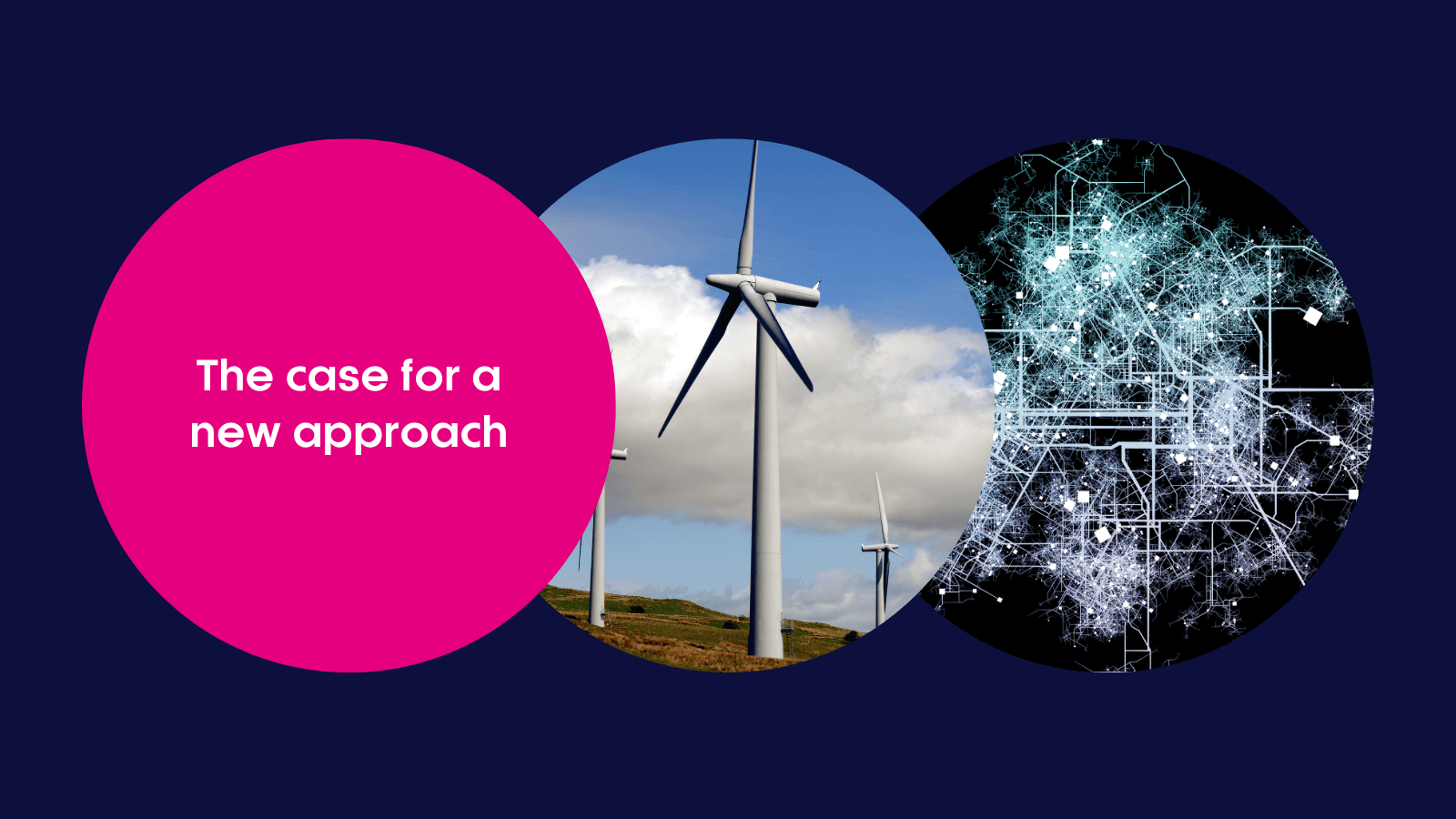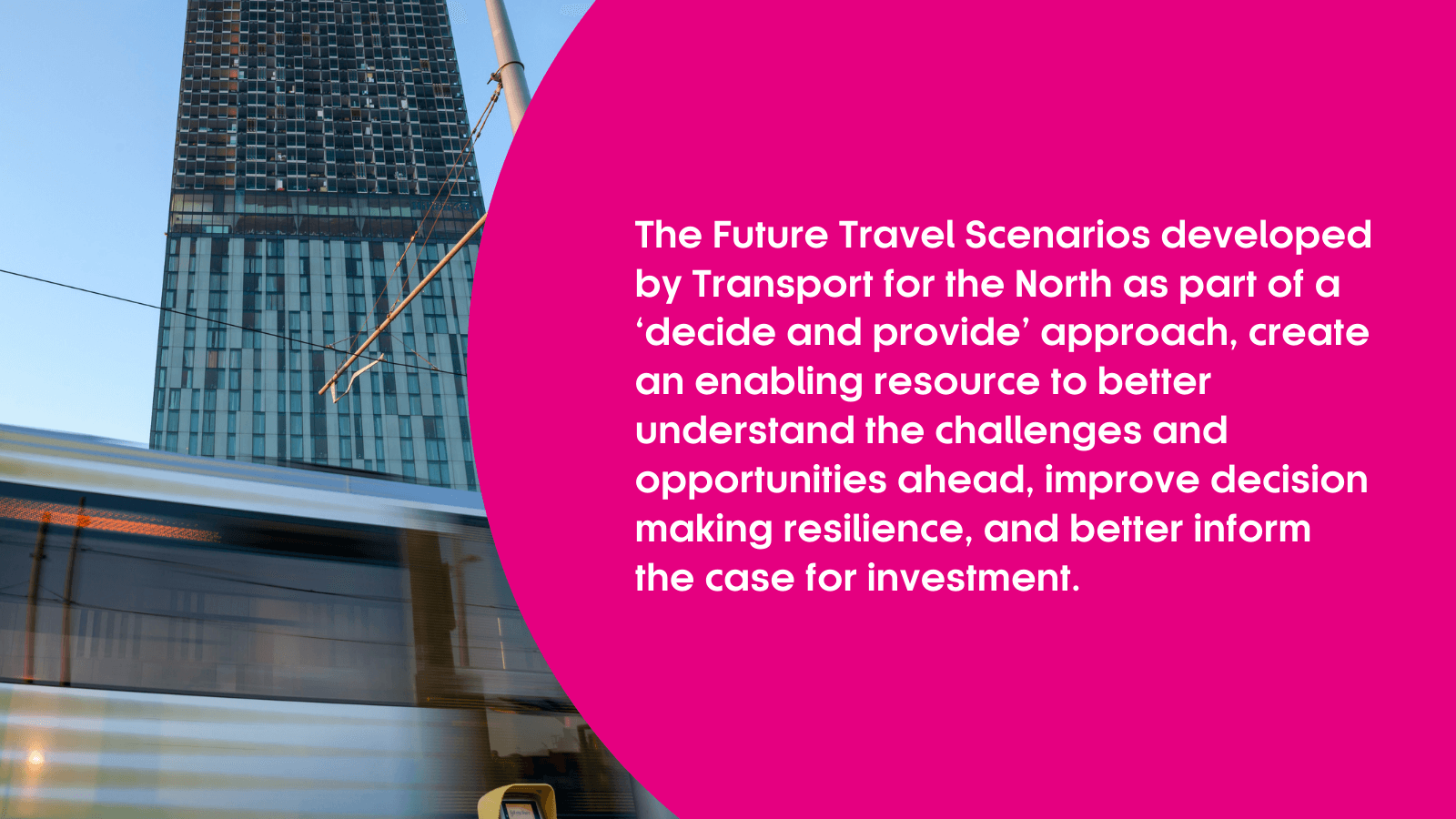Ahead of publication of our Future Travel Scenarios, to support resilient and future-proofed decision-making to deliver our vision set out in the Strategic Transport Plan, Professor Glenn Lyons (Mott MacDonald, Professor of Future Mobility at University of West of England, Bristol) outlines the benefits of a ‘decide and provide’ approach and provides his insights from working with Transport for the North and Northern local authority partners.
Even before the pandemic during 2020, the effects of the digital age colliding and merging with the motor age over the last two decades were becoming apparent in our daily lives.
Long-run trends of relevance to travel and transport have been changing (in the UK and other countries). Technology-based innovations are a source of ongoing potential disruption and change.
Now underscored by Covid-19 and its effects, there is deep uncertainty regarding what the future has in store. There is also recognition of considering what it should have in store if we have a chance to shape it – the so-called ‘new normal’.
The uncertainty is such that our traditional forecast-led approach in transport planning that has prevailed over past decades, now falls short in providing the sort of guidance to decision makers that they are entitled to expect in considering policy and investment decisions.
‘Predict and provide’ reflects demand-led supply: predict future demand for travel and provide appropriate transport supply to meet that demand.
Yet in the face of deep uncertainty, future demand cannot be predicted with much confidence. In turn it becomes more challenging to understand what constitutes a resilient strategy and sound investment.

There is a growing realisation that an alternative or evolved approach to transport planning is called for.
Uncertainty can be turned into an opportunity to shape the future, to the extent any one body – such as Transport for the North and its partners – can.
Early work by the New Zealand Ministry of Transport in 2014 called this new approach ‘decide and provide’: decide upon a preferred future and provide the means to help move towards that future.
This also underlined that transport forms part of a wider picture of how we access things we need (people, goods, services and opportunities) to support economic prosperity and social wellbeing in society: land use (spatial proximity) and, increasingly, digital connectivity also play a big part. They combine to provide us with resilience and adaptability – as has been exemplified in societal response to the pandemic.
A major example of decide and provide concerns decarbonisation: the UK Government has decided that the economy must have net zero carbon emissions by 2050 and the challenge is now determining a resilient strategy that provides a means of getting there.
Transport Scotland recently employed ‘decide and provide’ in developing its revised National Transport Strategy. It is therefore fitting that Transport for the North is also embracing this with its partners.
The approach involves two important elements: being vision-led; and accommodating uncertainty. It can be summarised as follows:
This approach aligns with the Futures Toolkit available from the Government Office for Science.
Public domain resources are also freely available specific to the transport sector and the Department for Transport is addressing such approaches to handling uncertainty – including the application of common analytical scenarios in appraisal of transport schemes – as part of its Appraisal and Modelling Strategy.

Addressing an uncertain future, with imperatives to shape a better future socially, economically and environmentally, is far from easy. It is uncomfortable, and this has only been amplified by the pandemic and the heightened urgency over the need to tackle climate change.
Problems and opportunities are multi-faceted, with varied needs and expectations from different stakeholders.
In this respect, Transport for the North faces a particularly challenging remit as a statutory sub-national transport body, charged with making the case for strategic transport improvements for the North of England.
It must balance the priorities of multiple partners within the region, as well as accounting for national stakeholders’ perspectives. It must work with all stakeholders to help chart a course through the uncertainty ahead towards mutually acceptable outcomes.
That course cannot treat transport in a vacuum but must understand and influence how the land use, telecommunications, and transport systems are together changing over time.
With its unique set of circumstances as outlined above, Transport for the North joins other transport authorities in taking bold but necessary steps to address strategic planning in a way that meets the demands of the times we live in.
The Future Travel Scenarios developed by Transport for the North as part of a ‘decide and provide’ approach, create an enabling resource to better understand the challenges and opportunities ahead, improve decision making resilience, and better inform the case for investment.